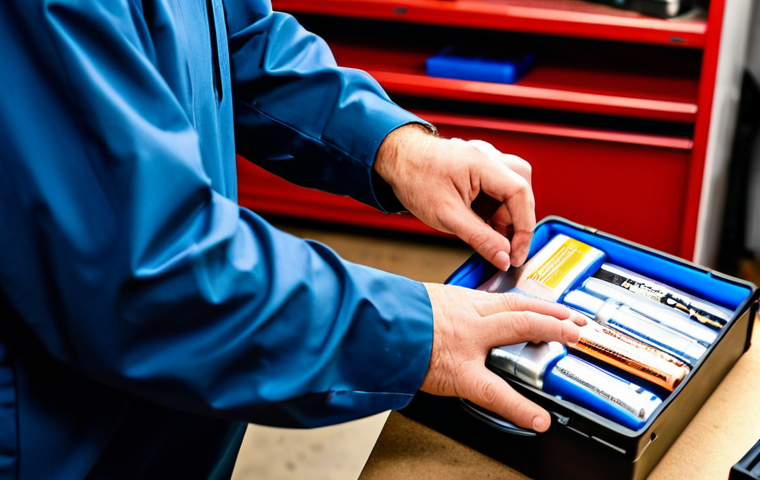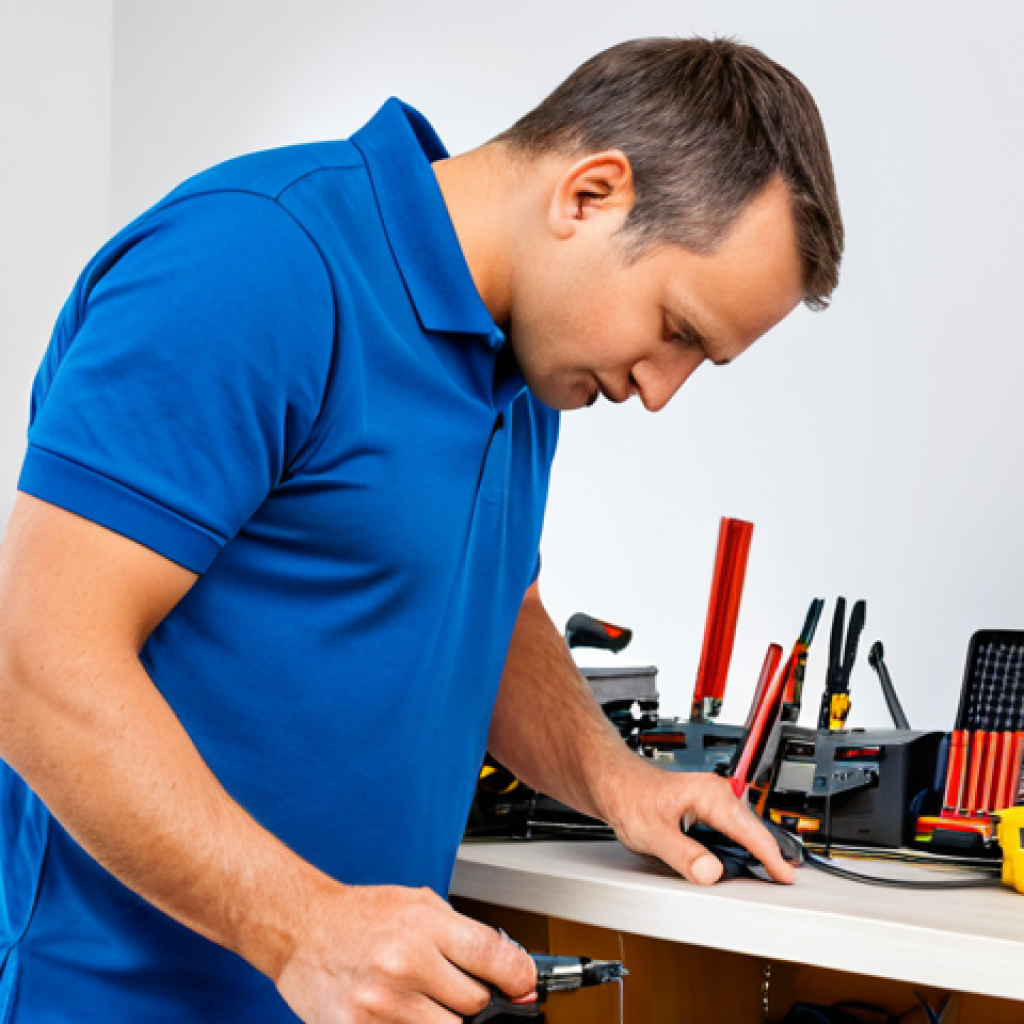There’s nothing quite like the rush of tearing across the park with your RC car, the motor humming, tires gripping, until suddenly… it sputters. That heart-sinking moment when your battery gives out prematurely?
Yeah, I’ve been there, countless times – it’s a total buzzkill. From battling stubbornly puffed LiPos to that frustrating mid-bash power loss, I’ve learned the hard way that proper battery management isn’t just a chore; it’s absolutely the lifeline of our entire RC hobby.
With the rapid evolution of battery technology and incredible smart chargers hitting the market, ensuring optimal performance and extending longevity has become both simpler and more crucial than ever before.
Forget those outdated myths; understanding modern battery care, from precision charging cycles to intelligent storage solutions, will genuinely transform your RC experience.
It literally saves you a fortune in replacements and keeps you racing. So, if you’re truly ready to unlock peak performance and extend the life of your valuable power packs, I’ll tell you exactly how!
Mastering the Art of Precision Charging: Beyond Just Plugging It In

There’s a common misconception among RC enthusiasts, especially new ones, that charging a battery is just a matter of hooking it up and letting the charger do its thing.
Oh, if only it were that simple! I learned this the hard way with a few prematurely retired LiPo packs that puffed up like angry marshmallows. What I’ve come to understand, through years of trial and error and countless hours on the track, is that charging is less about brute force and more about nuanced, intelligent management.
Your charger, especially a modern smart charger, is capable of so much more than just pushing amps. It’s a precision instrument designed to extend the life of your battery, not just fill it up.
Ignoring its advanced features, or worse, using an ancient, unbalanced charger, is like trying to win a drag race with square wheels. It just won’t work, and you’ll end up frustrated and out of pocket.
Understanding the subtle art of cell balancing, charge rates, and temperature monitoring truly makes a world of difference. It’s not just about getting to 4.2V per cell; it’s about getting there safely, consistently, and without undue stress on the battery’s internal chemistry.
1. Understanding C-Rates and Optimal Charge Speeds
When I first got into RC, the “faster is better” mentality dominated my thinking. I’d crank up the charge rate to get back on the track quicker, only to find my batteries feeling sluggish after a dozen cycles.
The truth is, while many modern LiPos can handle higher C-rates, consistently charging at their absolute maximum can induce unnecessary stress and heat, which are the silent killers of battery longevity.
I’ve personally found that sticking to a 1C charge rate (e.g., 5000mAh battery charged at 5 amps) for general use is the sweet spot for maximizing cycles and overall lifespan.
For those crucial race days or extended sessions where downtime is critical, bumping it up to 2C might be acceptable, but it’s a trade-off. Remember, every battery has a recommended charge rate, and pushing beyond that is a gamble.
It’s like constantly redlining your car engine – it might feel fast for a bit, but you’re just accelerating its demise. Investing in a charger that gives you precise control over these rates, and actually taking the time to set them correctly, is paramount.
Don’t just hit “start” without a second thought!
2. The Critical Importance of Cell Balancing
If there’s one aspect of charging that I cannot stress enough, it’s cell balancing. Picture this: you have a four-cell LiPo pack, and one cell is slightly lower in voltage than the others.
If your charger isn’t actively balancing during the charge cycle, that low cell will get overcharged or undercharged in relation to the others, leading to an unbalanced pack.
An unbalanced pack is a weak pack, prone to premature failure, reduced performance, and in extreme cases, even thermal runaway. I’ve seen it happen – a beautiful, expensive pack slowly degrading because I was too lazy to use the balance lead.
Modern smart chargers do this automatically, but you *must* connect the balance lead every single time. It’s the battery’s equivalent of going to the doctor for a check-up.
The charger precisely monitors each individual cell, ensuring they all reach the same voltage concurrently. This ensures maximum capacity utilization and, more importantly, keeps your battery healthy and safe.
Seriously, never skip the balance lead.
Smart Storage Solutions: Protecting Your Investment When Not in Use
It’s easy to overlook what happens to your RC batteries when they’re not actively being used, but believe me, improper storage is a silent killer. I used to just throw my LiPos back into the toolbox after a run, often fully charged.
That was a huge mistake. Leaving LiPo batteries fully charged for extended periods (more than a day or two) puts them under immense internal stress, leading to degradation of the internal chemistry, reduced capacity, and eventually, the dreaded puffing.
On the flip side, storing them completely empty can also cause damage by dropping the cell voltage too low, potentially rendering them unusable. It’s a delicate balance, and finding that sweet spot for storage has been a game-changer for my battery longevity.
Think of it like taking care of a prized vintage car; you wouldn’t just leave it out in the elements, would you? Your batteries deserve the same consideration.
Proper storage extends their life, maintains their performance, and keeps them safe.
1. The Golden Rule of LiPo Storage Voltage
The universally accepted “golden rule” for LiPo storage is to bring each cell to approximately 3.80-3.85V. Why this specific range? It’s the voltage point where the internal chemical processes are most stable, minimizing stress and degradation over time.
Most modern smart chargers have a dedicated “storage charge” or “storage discharge” function that will automatically bring your battery to this precise voltage.
I always, and I mean *always*, use this feature if I know I won’t be using a battery for more than 24-48 hours. It takes a little extra time, but it literally adds months, sometimes years, to your battery’s lifespan.
I’ve had LiPo packs that were seemingly dead after only a few months of neglect come back to life (or at least stop degrading) simply by adhering to this storage voltage rule.
It’s a small habit with massive returns.
2. Physical Storage Environment and Safety Protocols
Beyond voltage, where and how you physically store your batteries is equally important. I keep all my LiPo batteries in dedicated LiPo-safe bags or metal ammunition cans.
These aren’t just for show; they’re a critical safety measure in the unlikely event of a battery fire. Never store them in direct sunlight, in extremely hot environments (like a car on a summer day), or in excessively cold conditions.
Temperature extremes are detrimental to battery health. I also make it a point to store them away from flammable materials and in an area where they won’t be easily knocked around or damaged.
It’s about minimizing risks. A damaged LiPo cell, even if it looks minor, is a ticking time bomb. Be vigilant, and err on the side of caution.
Decoding Battery Behavior: When to Trust and When to Retire
RC batteries, particularly LiPos, communicate their health in subtle ways. Learning to interpret these signals is vital for both performance and safety.
I’ve had moments of pure panic when a seemingly healthy battery suddenly puffed up, or when a brand new pack delivered shockingly poor run times. Through these frustrating experiences, I’ve developed a keen eye for early warning signs, saving me from potential hazards and wasted track days.
Ignoring these signals is like ignoring the “check engine” light on your car – you know it’s going to lead to bigger problems down the line. Becoming attuned to how your batteries “feel” and perform is a skill developed over time, but there are clear indicators that anyone can learn to spot.
1. Identifying Swelling and Physical Damage
This is perhaps the most obvious and critical warning sign: swelling or “puffing.” If your LiPo battery looks bloated, expanded, or feels soft in certain spots, it’s a clear indication of internal gas buildup due to chemical degradation.
This is often caused by overcharging, over-discharging, or simply aging. A puffed battery is a dangerous battery. I’ve heard countless stories, and experienced some close calls myself, of puffed batteries escalating into thermal runaway.
My absolute rule of thumb: if it’s puffed, it’s retired. Immediately. There’s no “can I get one more run out of it?” – the answer is always no.
Other physical damages like cuts in the shrink wrap, bent connectors, or exposed wires also demand immediate attention. These can lead to shorts, which are just as dangerous.
Trust your gut; if it looks off, it probably is.
2. Monitoring Performance Degradation and Internal Resistance
Beyond physical signs, performance degradation is a strong indicator of a battery’s health. Are your run times getting shorter? Is your punch less powerful?
Is the battery getting unusually hot during use? These are all signs that your battery is losing its ability to deliver current efficiently, often due to increasing internal resistance (IR).
Modern chargers can measure IR, which is an invaluable metric. Low IR means a healthy battery; high IR means it’s degrading. I maintain a log of my battery’s IR readings, and when a pack’s IR starts to climb significantly, I know its days are numbered.
It’s like a car slowly losing horsepower – it still drives, but not like it used to. Being proactive about retirement prevents frustrating mid-bash power losses and ensures you’re always getting optimal performance.
The Unsung Heroes: Proper Connectors, Wiring, and Adapters
It’s an easily overlooked detail, but the quality of your connectors and wiring can dramatically impact your RC vehicle’s performance and the longevity of your batteries.
I remember one season where I was constantly battling unexplained power loss and unusual heat, only to trace it back to some cheap, generic connectors I’d used.
The difference after upgrading to high-quality, low-resistance connectors was night and day. It’s like running a marathon with a straw in your mouth – you’re just not getting enough air.
Your battery might be a powerhouse, but if its connection to the ESC is compromised, all that power is wasted as heat or simply not delivered efficiently.
1. The Gold Standard: Choosing High-Quality Connectors
When it comes to connectors, you truly get what you pay for. Cheap, low-quality connectors often have higher resistance, leading to power loss, increased heat, and potential melting.
I personally swear by genuine XT60s, XT90s, or EC5/IC5 connectors from reputable brands. Always check for genuine products; knock-offs are rampant and dangerous.
The gold plating isn’t just for show; it vastly improves conductivity and reduces resistance. Learning to solder them properly is also a critical skill.
A poorly soldered joint is just as bad as a cheap connector. Take the time to make clean, solid connections. This small investment pays dividends in performance and peace of mind.
2. Avoiding Resistance with Smart Wiring and Adapters
Every connection point and every inch of wire adds resistance to your system. While sometimes unavoidable, aim to minimize adapters and keep your wiring runs as short and neat as possible.
Using multiple adapters stacked together (e.g., EC5 to XT60 to T-Plug) is a recipe for disaster, creating numerous points of potential failure and significant voltage drop.
If you absolutely need an adapter, choose one with high-quality wire and connectors. For example, if you have an ESC with XT60 but your batteries are EC5, it’s better to get a single, well-made adapter than to cobble together multiple inferior ones.
Think of it as a plumbing system; any narrow pipes or leaky joints will reduce the water pressure. Your RC car’s electrical system is no different.
Beyond the Basics: Advanced Tips for Peak Battery Performance
Once you’ve mastered the fundamentals, there are a few advanced tricks that can squeeze every last drop of performance and life out of your RC batteries.
These aren’t necessarily for beginners, but for those who are serious about optimizing their setup, they can make a significant difference. I’ve experimented with many of these over the years, and while some are subtle, cumulatively they contribute to a much more reliable and exhilarating RC experience.
These are the little secrets that often separate consistent performers from those constantly battling battery issues.
1. Understanding and Utilizing Internal Resistance Readings
As mentioned before, Internal Resistance (IR) is a key health indicator. Many advanced chargers provide IR readings for each cell. Learning to interpret these numbers is crucial.
Generally, a new LiPo pack will have very low IR (often below 5mΩ per cell, depending on capacity and C-rating). As the battery ages or is stressed, its IR will gradually increase.
A sudden spike in one cell’s IR compared to others in the pack, or a significant increase across the entire pack, is a strong indicator that the battery is degrading and might be nearing retirement.
I’ve used IR readings to proactively pull batteries from service before they became a liability, preventing unexpected shutdowns during critical runs.
It’s like a detailed medical report for your battery.
2. The Nuance of Temperature Management During Use
Just as temperature is crucial during charging and storage, it’s equally vital during discharge. Excessive heat generated during hard use (high current draw) dramatically accelerates LiPo degradation.
If your battery is coming off the track piping hot, you might be pushing it too hard for its C-rating, or your vehicle’s setup is drawing too much current.
Consider a higher C-rated battery, adjusting your gearing, or improving airflow around the battery compartment. I’ve often felt a battery after a particularly intense run; if it’s uncomfortably hot to touch, I know I’m stressing it.
Finding the right balance between power and heat is essential for long-term health.
| Battery Type | Optimal Charge Rate (Recommended) | Storage Voltage (Per Cell) | Common Max Discharge Temp | Safety Best Practice |
|---|---|---|---|---|
| LiPo (Lithium Polymer) | 1C (Up to 2C for certain packs) | 3.80V – 3.85V | 140°F / 60°C | Store in LiPo safe bag/ammo can. Never over-discharge. |
| LiFe (Lithium Iron Phosphate) | 1C – 4C (Check manufacturer spec) | 3.30V – 3.35V | 150°F / 65°C | More stable, but still use caution. Good for receiver packs. |
| NiMH (Nickel-Metal Hydride) | 0.5C – 1C (Peak detection charging) | 0V (Can be discharged completely) | 120°F / 50°C | Cycles better with full discharge before recharge. |
| NiCd (Nickel Cadmium) | 0.5C – 1C (Peak detection charging) | 0V (Memory effect issues) | 120°F / 50°C | Rarely used now. Requires full discharge to avoid memory. |
Safety First, Always: Handling High-Powered LiPos with Respect
I’ve seen the horror stories online, and I’ve experienced the fear firsthand when a battery starts acting up. LiPo batteries, while amazing power sources, demand respect.
They are not toys, and improper handling can lead to serious consequences, including fires and injuries. This isn’t meant to scare you away from the hobby; it’s meant to empower you with the knowledge to handle them safely.
Think of it like driving a powerful sports car – exhilarating, but you still need to follow traffic laws and know its limits. Neglecting safety protocols isn’t just risky for your gear; it’s risky for your home, your family, and yourself.
My primary focus with every battery interaction is always “safety first.”
1. Charging Location and Fire Prevention
Never, ever charge LiPo batteries unattended, especially not overnight. I always charge them on a non-flammable surface, like concrete or tile, away from anything combustible.
I keep a fire extinguisher (specifically a LiPo-rated one if possible, or at least a Class D for metal fires) or a bucket of sand nearby. Placing the battery inside a LiPo-safe charging bag or a metal container while charging is also a simple yet crucial safety measure.
It might feel overkill at first, but when you consider the potential damage a LiPo fire can cause, these precautions seem minimal. Better safe than sorry is an understatement when it comes to LiPos.
2. Immediate Action for Puffed or Damaged Batteries
If you ever encounter a puffed, smoking, or actively burning LiPo battery, the protocol is clear and immediate. Do not attempt to cool it with water, as that can actually worsen LiPo fires.
Get it outside to a safe, non-flammable area (like concrete or gravel) immediately using tongs or gloved hands if necessary, and place it in a metal container or a bucket of sand.
Let it burn out completely. Do not try to extinguish it with regular water. Once cooled and completely discharged, dispose of it properly at a hazardous waste facility.
Knowing what to do in an emergency is as important as preventing one. This isn’t just about protecting your RC gear; it’s about protecting everything else you value.
Closing Thoughts
Ultimately, taking care of your RC batteries isn’t just about preserving a costly investment; it’s about unlocking the full potential of your hobby. It’s about enjoying longer run times, more consistent power, and the peace of mind that comes with knowing you’re operating safely. I truly believe that by adopting these practices, you’ll spend less time troubleshooting and more time doing what we all love: pushing our RC vehicles to their limits. Treat your batteries like the vital components they are, and they will undoubtedly serve you well, extending your enjoyment and saving you from unnecessary frustrations and expenses.
Good to Know
1. Always inspect your battery leads and connectors for signs of wear or damage before every use. A frayed wire or loose connector is an accident waiting to happen.
2. Consider purchasing a multi-charger if you have several battery packs. It drastically cuts down charging time and gets you back to the action quicker, making those long track days much more enjoyable.
3. Label your batteries! I use a simple marker to note down purchase dates and cycle counts (roughly) on each pack. This helps track their age and performance degradation over time.
4. Don’t be afraid to ask for advice at your local hobby shop or from experienced RC enthusiasts. There’s a wealth of knowledge out there, and most people are happy to share their tips and tricks.
5. Remember that even with perfect care, batteries have a finite lifespan. When a battery consistently underperforms or shows signs of puffing, don’t hesitate to retire it safely. It’s better to replace one battery than an entire vehicle (or worse, your home).
Key Takeaways
Mastering RC battery care means prioritizing safety, understanding optimal charge/discharge rates, diligently balancing cells, and ensuring proper storage voltage. Always monitor for physical signs of damage and performance degradation, especially swelling and high internal resistance. Invest in quality connectors and smart charging practices to maximize longevity and performance. Remember, respect your LiPos, and they’ll reward you with countless hours of high-performance RC fun.
Frequently Asked Questions (FAQ) 📖
Q: I’ve definitely had my share of batteries just quitting on me mid-run, or even worse, looking like a little balloon after a charge. What are the absolute most common mistakes people make that kill their RC batteries prematurely, and how can I spot the signs early?
A: Oh, man, I feel you on that! That puffed battery feeling is just the worst, a real gut-punch when you realize a pack is probably toast. From what I’ve seen and sadly experienced myself, the biggest culprits are typically over-discharging, over-charging, and improper storage.
Pushing a LiPo battery past its safe discharge voltage – that’s often 3.0-3.2V per cell, but check your battery’s specs! – can permanently damage its internal chemistry, leading to loss of capacity and, yep, puffing.
It’s like running a marathon without proper training and just collapsing at the finish line, except the battery never really recovers. On the flip side, leaving a battery on a basic charger too long or using a faulty one can overcharge it, which is incredibly dangerous and a surefire way to kill it fast.
For early warning signs, keep an eye out for a sudden drop in punch or acceleration during a run, even if your voltage reads okay, or if the battery feels unusually warm.
And of course, any visible swelling, no matter how slight, means that pack is on its way out and needs to be handled with extreme caution. My advice? Don’t push them to the very last electron!
Q: You mentioned that modern smart chargers are a game-changer for battery care. How do these ‘intelligent’ chargers actually help extend battery life and boost performance compared to older models, and what’s one feature I should absolutely prioritize when buying one?
A: They really are! I remember the old days with those basic wall chargers – you just plugged it in and hoped for the best. Modern smart chargers are like having a tiny battery guru watching over every single cell.
The core difference is precision. They don’t just dump power into the battery; they meticulously balance each individual cell within the pack during the charging process.
This ‘cell balancing’ is critical because it ensures every cell reaches the same voltage, preventing weaker cells from being overcharged or undercharged.
This alone dramatically extends the pack’s lifespan and helps maintain consistent performance. Older chargers just couldn’t do that, often leaving individual cells out of sync, which leads to early degradation and reduced punch.
If you’re looking to buy one, the single most impactful feature you should absolutely prioritize is a dedicated storage charge mode. Seriously. This function charges or discharges your battery to a safe, stable voltage (typically around 3.80-3.85V per cell for LiPos) for long-term storage.
It’s the optimal state for chemical stability, preventing the slow degradation that happens when batteries are stored either fully charged or completely depleted.
It might seem like a small thing, but for preserving your investment, it’s a monumental difference.
Q: Okay, I’m sold on extending life and saving money. Beyond just charging, what’s the single most impactful ‘intelligent storage solution’ or habit I can adopt right now to significantly prolong the life of my valuable LiPo packs and truly avoid those painful replacement costs?
A: Alright, if you’re serious about saving money and keeping those packs happy, the single most impactful habit, hands down, is consistently using the storage charge function on your smart charger.
I touched on it briefly, but I can’t stress this enough. I’ve personally seen batteries that were meticulously cared for in this way last years longer than packs I used to just leave fully charged or completely drained after a run.
It feels like a minor chore to plug them back in after a day of bashing, but it’s a huge payoff. When a LiPo is stored fully charged for extended periods, it puts a lot of stress on the internal chemistry, leading to accelerated degradation and that dreaded “puffing.” Conversely, storing them completely empty can push them into a critical, unrecoverable deep discharge state.
A storage charge, hitting that sweet spot of about 3.8V per cell, is the chemical equivalent of a comfortable, stable resting state for your battery. It minimizes internal resistance growth and capacity loss, meaning your packs hold their punch longer, last more cycles, and you simply don’t have to shell out for new ones as often.
It literally saves you hundreds over the years. Trust me, it’s the simplest habit with the biggest return.
📚 References
Wikipedia Encyclopedia
구글 검색 결과
구글 검색 결과
구글 검색 결과
구글 검색 결과
구글 검색 결과


